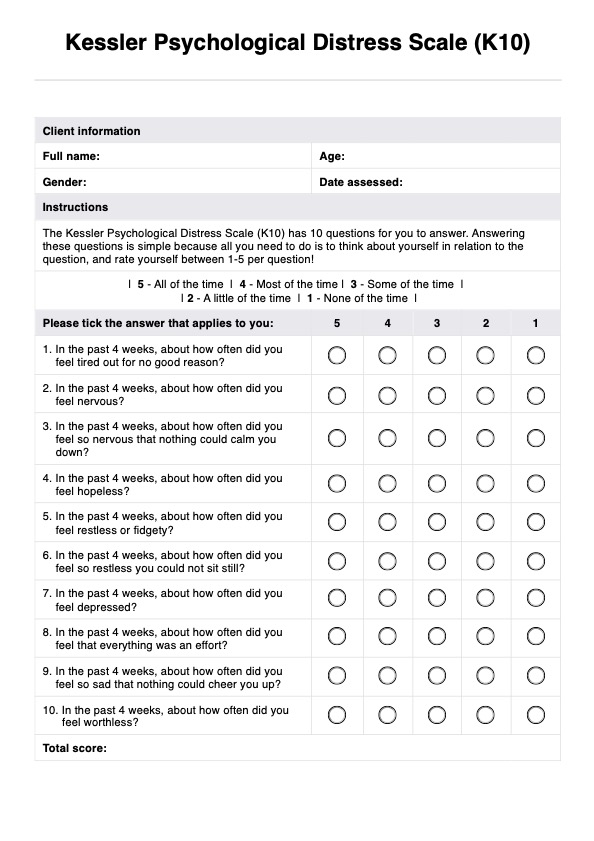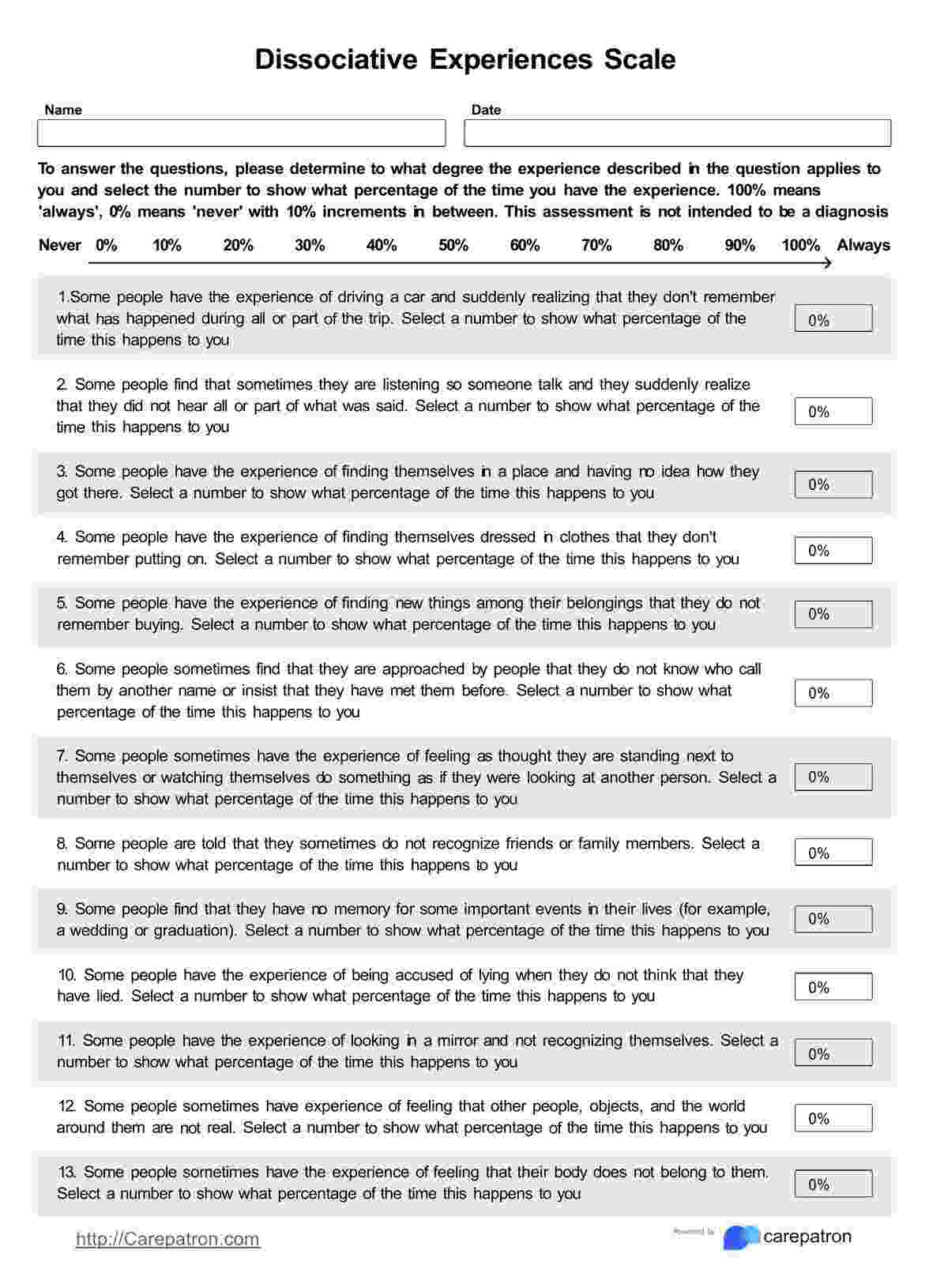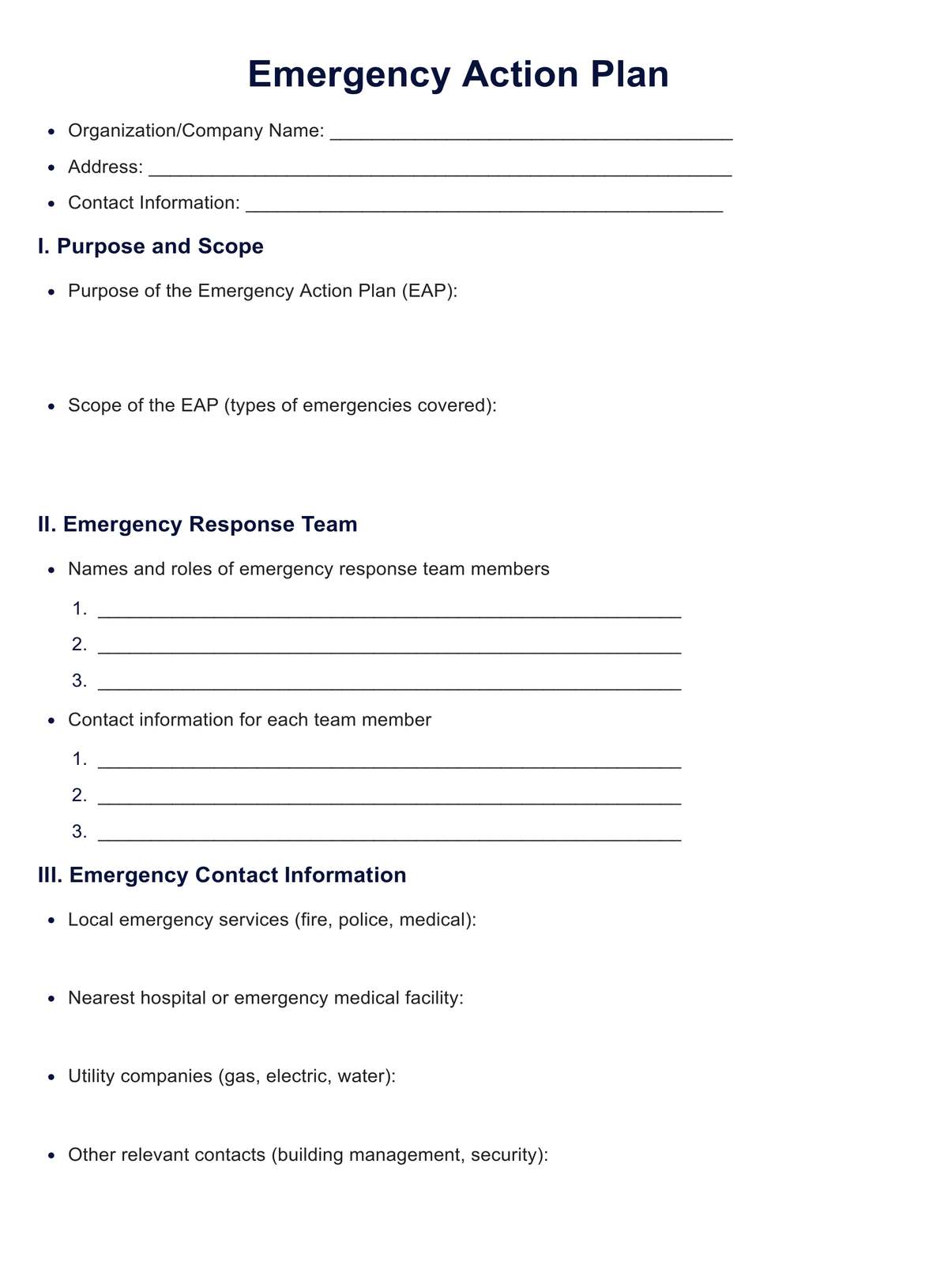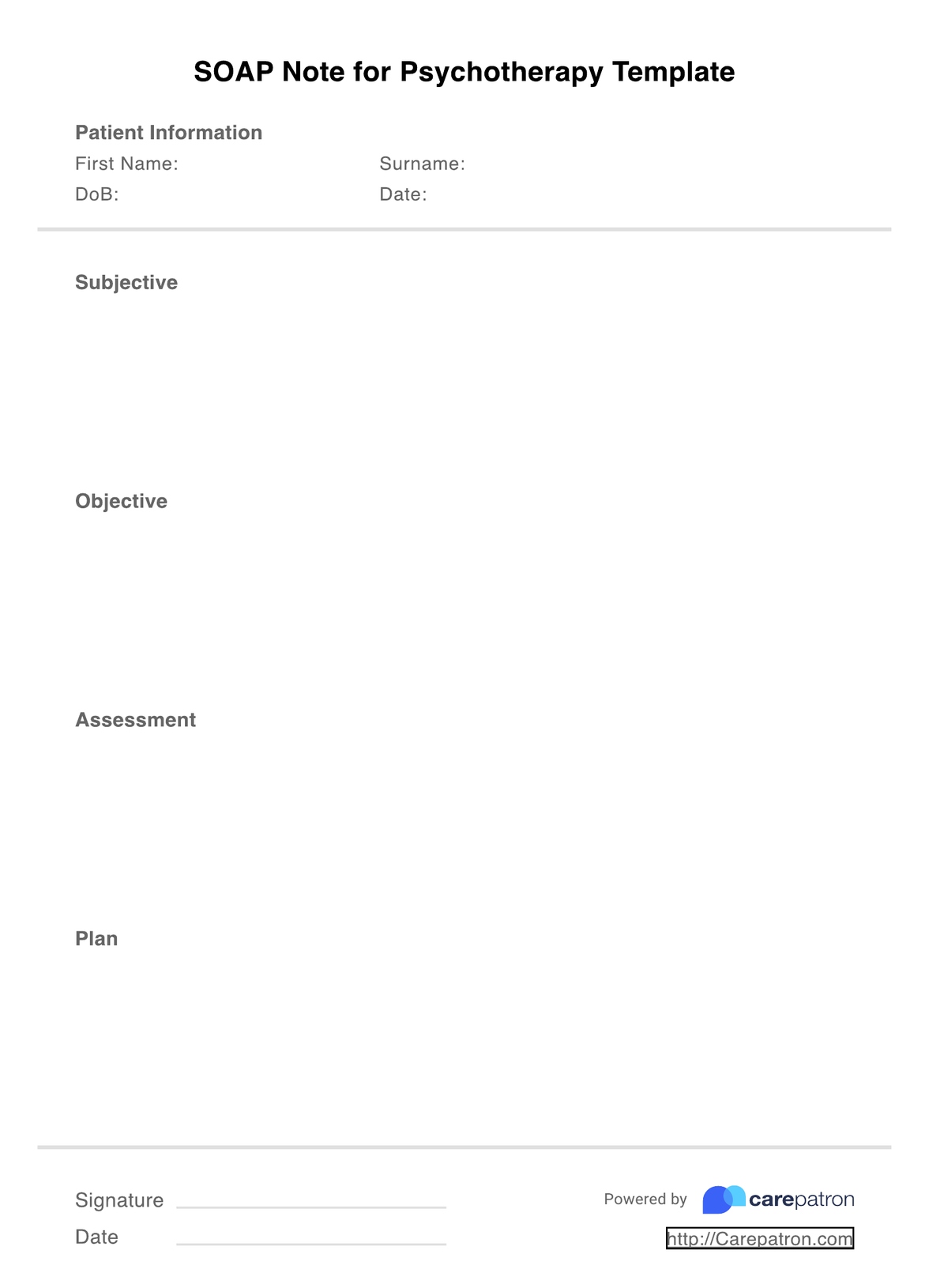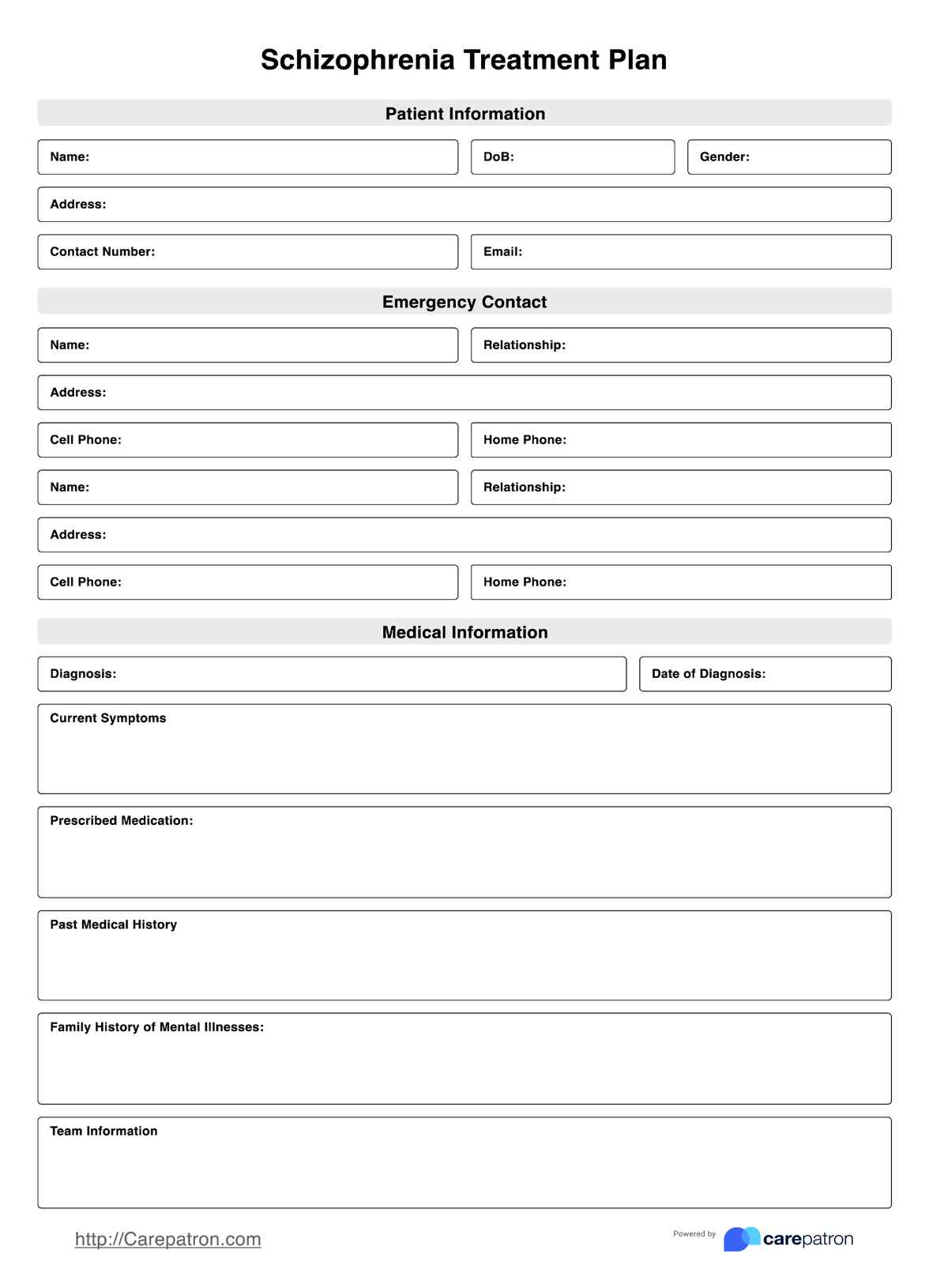Counseling Theories Comparison Chart
Use this Counseling Theories Comparison Chart to differentiate counseling theories and select approaches that can work best for each unique client.


What are counseling theories?
Counseling sessions entail strategic and evidence-based discussions and exercises to support a client's personal growth, reduce emotional distress, and promote positive behavior. The frameworks that guide therapists and counselors in understanding and improving human behavior, emotions, and mental health issues are known as counseling theories.
These theories provide a foundation for the therapeutic approaches and key techniques used in counseling practice. No single counseling theory is a perfect fit for every client or situation, and different theories emphasize different aspects of human experience. To make informed clinical decisions, counselors must be well-versed in various theories.
It is the counselor's responsibility to match the theory to the client's needs. For instance, cognitive-behavioral therapy (CBT) might be a good choice for someone struggling with anxiety, while person-centered therapy might be more suitable for someone seeking self-discovery. Many therapists integrate techniques from various approaches to create a comprehensive and personalized treatment plan.
Understanding the strengths and limitations of various counseling theories better provides counselors with a wider range of tools to address diverse client concerns. This promotes a client-centered approach, ensuring the counseling techniques align with the client's specific needs.
Counseling Theories Comparison Chart Template
Counseling Theories Comparison Chart Example
How to use the Counseling Theories Comparison Chart
Follow these steps to effectively utilize the counseling theories chart and enhance your understanding and application of different counseling approaches:
Step 1: Access the chart
Click on the 'Download' button to get the free PDF copy of the Counseling Theories Comparison Chart. You may also click on 'Use template' to access it directly on the Carepatron platform and customize it to fit your needs.
Step 2: Familiarize yourself with the chart
The chart is a reference tool designed to easily compare the fundamental principles, goals, and techniques associated with different counseling theories. Familiarize yourself with the chart. Use it to identify less familiar theories and determine areas to focus on in your professional learning and development.
Step 3: Client evaluation
Consider your client's specific needs and goals. Use the comparison chart to identify the most fitting counseling approaches. Consider how the theories align with client goals, worldviews, and experiences to determine which are likely to be most effective.
Step 4: Session planning
Structure counseling session plans based on the selected therapeutic approach. Use the chart to select techniques best suited to the client's needs or presenting issues. Plan activities according to each technique and set an objective for every session.
Step 5: Session implementation and notes
During the counseling process, use the chart to inform the implementation of planned techniques and to recognize if adjustments are needed. Keep a comprehensive record of your sessions, marking down specific observations, the client's progression, and any necessary amendments to the therapeutic approach.
Categories of counseling theories
In exploring the therapeutic process, it's helpful to understand the broad categories to which these approaches belong. Here are some key types of counseling theories:
- Psychodynamic theories: Rooted in Freudian principles, these therapies focus on unconscious processes, childhood experiences, and the impact of early relationships on current behavior and emotions. Psychodynamic therapy aims to bring unconscious conflicts to light for resolution.
- Behavioral theories: Behavioral theories emphasize observable behaviors and the role of learning in shaping behavior. Therapists using behavioral approaches focus on modifying maladaptive behaviors through techniques like reinforcement and conditioning.
- Humanistic theories: Humanistic theories emphasize personal growth, self-actualization, and the importance of the therapeutic alliance. These theories prioritize empathy, authenticity, and unconditional positive regard.
- Cognitive theories: Cognitive theories focus on the role of thoughts and beliefs in shaping emotions and behaviors. Cognitive behavioral therapy (CBT) is a prominent approach that helps individuals identify and change negative thought patterns to improve mental health using cognitive restructuring and motivational interviewing techniques.
- Existential and phenomenological theories: These theories explore themes of meaning, freedom, responsibility, and authenticity in human existence. Therapists using existential approaches help clients confront existential concerns and make choices aligned with their values.
Different counseling approaches
Each counseling theory offers unique perspectives on human behavior, emotions, and thought processes that can define our approach to healing and growth for clients. Here are several key counseling approaches outlined by Corey (2017):
Psychoanalytic therapy
Rooted in Sigmund Freud's psychological principles, this approach is underpinned by the psychoanalytic concept of the unconscious mind. It emphasizes how unresolved issues from one's past, particularly childhood, influence present behavior and thoughts. This approach underscores the therapeutic relationship as a vehicle for uncovering and resolving these unconscious conflicts.
Adlerian therapy
Developed by Alfred Adler, Adlerian therapy focuses on the individual's feelings of inferiority and strives for a sense of belonging and social connectedness. It emphasizes the importance of community and viewing individuals holistically, promoting self-awareness and societal contribution.
Existential therapy
This approach contends with the fundamental concerns of existence, such as freedom, death, isolation, and meaning. Existential therapy encourages clients to confront these issues head-on and live authentically, with therapists providing unconditional positive regard to support clients' navigational efforts through these existential concerns.
Person-centered therapy
Carl Rogers' person-centered therapy posits that individuals are inherently good and capable of self-directed growth. The therapist provides unconditional positive regard, empathy, and genuineness, fostering a therapeutic environment conducive to self-exploration and personal growth.
Gestalt therapy
Gestalt therapy, developed by Fritz Perls, emphasizes present awareness and experiencing feelings in the "here and now." It utilizes experiential techniques to increase self-awareness and responsibility.
Behavioral therapy
Behavioral therapy focuses on changing maladaptive behaviors using classical or operant conditioning. Techniques such as reinforcement and punishment are employed to modify behaviors, grounded in the belief that behavior is learned and can be unlearned. Motivational interviewing is also used to encourage change. This also includes multimodal therapy and other new-wave approaches, such as dialectical behavior therapy (DBT) and mindfulness techniques.
Cognitive behavior therapy (CBT)
CBT merges cognitive processes and behavioral strategies to alter negative thought patterns and maladaptive behaviors. It is effective for a range of issues, including depression and anxiety, leveraging techniques such as cognitive restructuring and behavioral experiments.
Reality therapy
Reality therapy is premised on choice theory and focuses on current issues and how to solve them. It emphasizes personal responsibility and the significance of fulfilling fundamental needs such as belonging, power, freedom, and fun.
Feminist therapy
Feminist therapy critiques the societal structures that contribute to a person's problems. It recognizes the influence of social, cultural, and political context on individual experiences, promoting empowerment and social justice.
Postmodern therapy
Postmodern therapies, including approaches like narrative therapy, focus on the stories people construct and live by. Narrative therapy, for instance, helps clients re-author their lives' stories in more empowering ways, valuing client expertise and adopting a collaborative stance.
Family systems therapy
Family systems therapy looks at family relations, communication patterns, and behavior as part of a larger system. Strategic family therapy involves techniques like structural family therapy and the Gottman Method couples therapy. These focus on altering family structures and improving communication to resolve issues.
Reference
Corey, G. (2017). Theory and practice of counseling and psychotherapy (10th ed.). Cengage Learning.
Commonly asked questions
Counseling theories differ in their foundational principles, techniques, and approaches to therapy. Each theory offers a unique perspective on human behavior, mental health, and the therapeutic process. For example, humanistic counseling theories emphasize personal growth and self-actualization, while cognitive behavioral therapy focuses on changing negative thought patterns and behaviors.
The most effective counseling model depends on the context and clients' needs. There is no single "best" approach in counseling, and practitioners often integrate elements from different models to create a personalized treatment plan. Some prominent counseling models in clinical practice include humanistic, cognitive, behavioral, psychoanalytic, constructionist, and systemic approaches.
Theories play a fundamental role in counseling. They provide a conceptual framework for understanding human behavior, mental health issues, and effective therapeutic interventions. They guide practitioners in assessing clients' needs, formulating treatment plans, and implementing evidence-based practices.
A counseling theories chart is used to select the most appropriate counseling approaches for a specific client. It provides therapists and counselors with a simple yet comprehensive way to assess the strengths and limitations of each theory and a deeper understanding of how to address cognitive distortions, problematic behaviors, psychological disorders, and emotional difficulties within clinical mental health counseling.


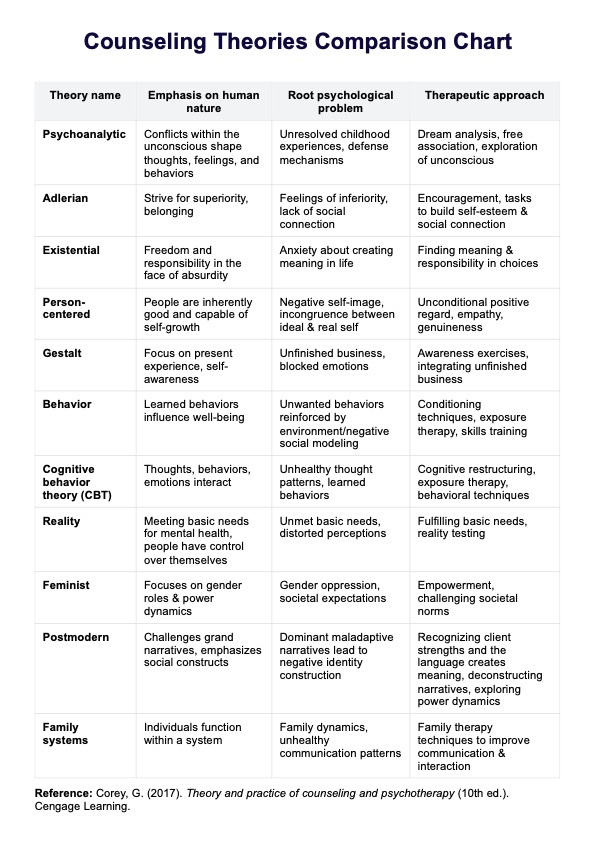
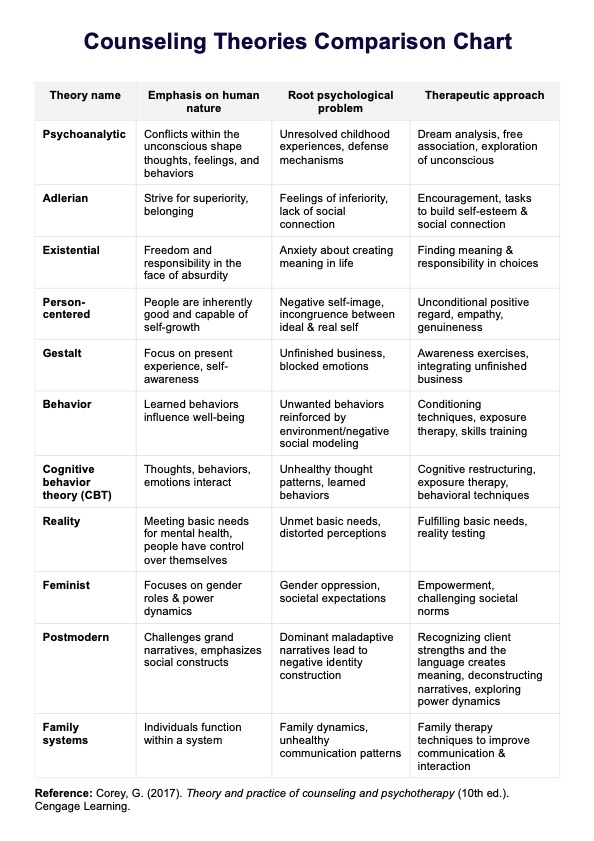

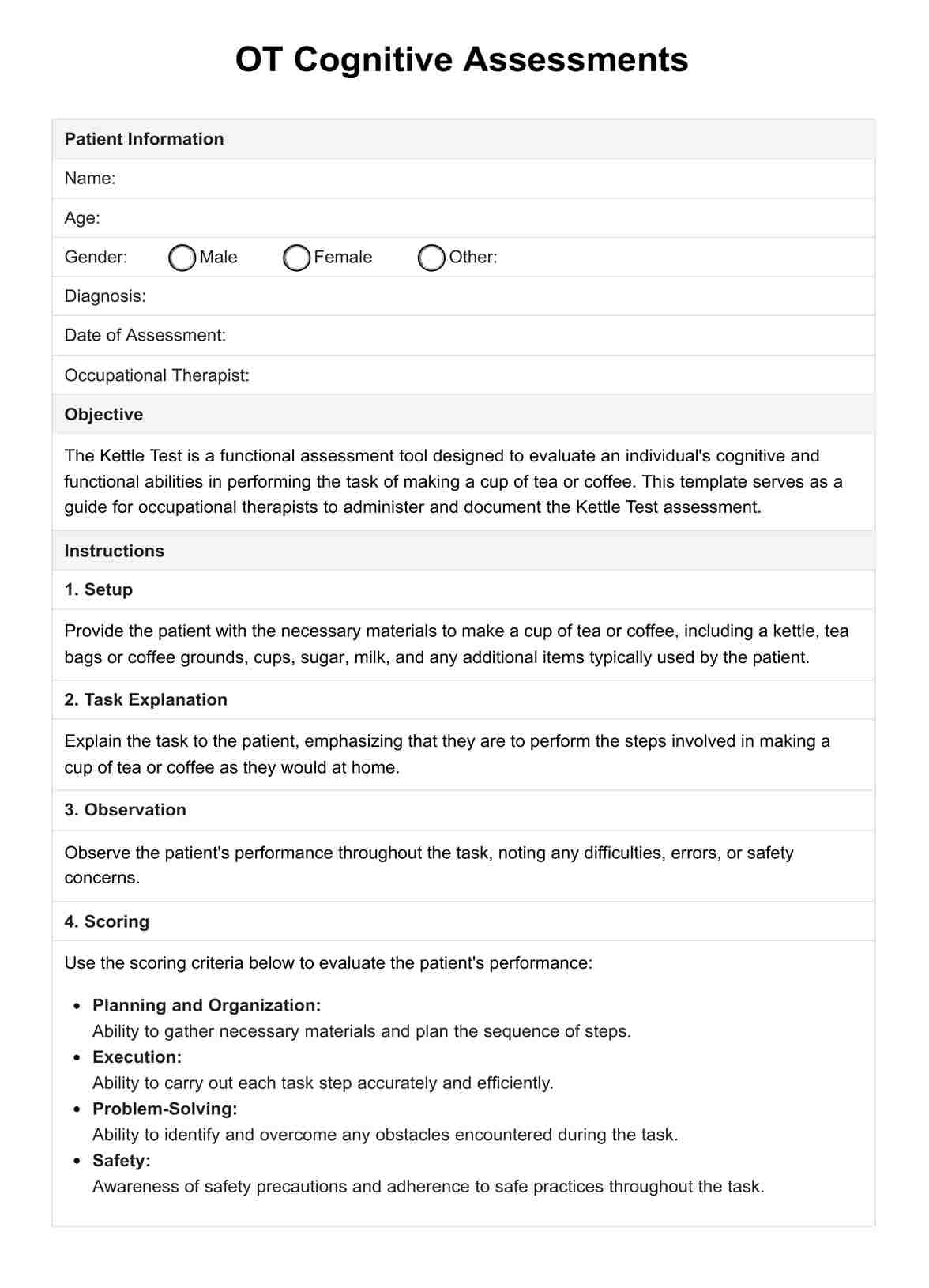
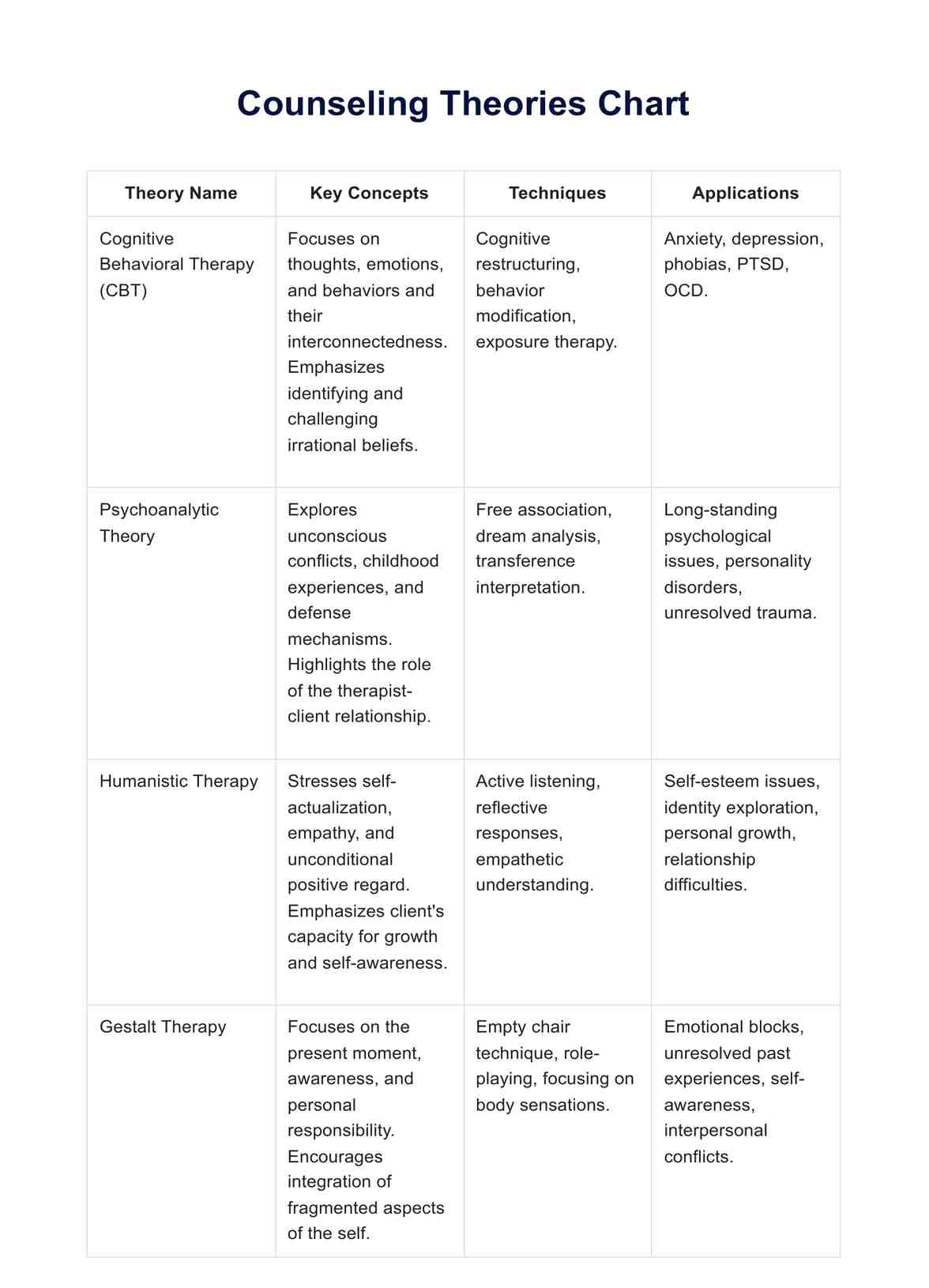
















-template.jpg)



















































































